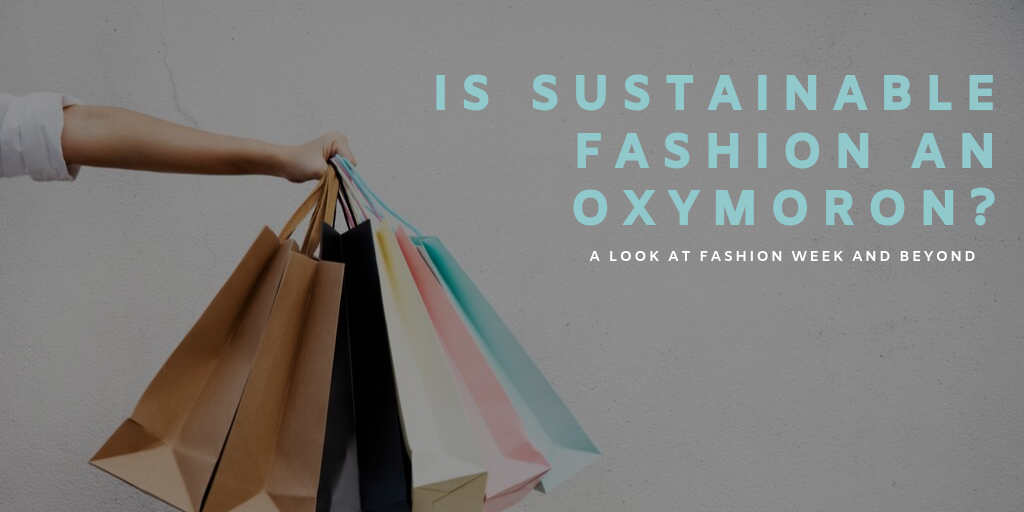
By Dr Charika Channuntapipat, Department of Accounting, Lloyds Banking Group Centre for Responsible Business
Dr Solon Magrizos, Department of Marketing
Professor Craig Smith, Department of Marketing
Fashion Weeks have been around for more than half a century and set the trend for fashion lovers worldwide. Recently, the term ‘sustainable fashion’ has become more popular and integrated into fashion events. For some, the very idea of sustainable fashion can be an oxymoron. How can something that is inevitably ephemeral be consistent with sustainability? Fashion weeks have influenced the culture of fast fashion, an endless cycle whereby brands produce clothing that is on trend at cheap and affordable prices. Fast fashion has created significant social and environmental impact that needs addressing.
Put Fashion Week on the Sustainability Spotlight
The fashion industry is often recognised as one of the main contributors to unsustainability within society and the environment due to the impact of producing fashion goods. Recent reports by the House of Commons Environmental Audit Committee highlighted that ‘textile production contributes more to climate change than international aviation and shipping combined’, and the environmental cost of producing, transporting and caring for clothes can amount to 5% globally of all manmade greenhouse emissions. In 2016, more than one million tonnes of clothes were bought in the UK.
Besides these reports, there have also been a number of social movements questioning the impact of the fashion industry, urging fashion businesses and consumers to react to the problem. An example of this is Extinction Rebellion, an international movement to save the planet which is calling for fashion week to be cancelled, given the ecological impacts of fast fashion. One of the activists from Extinction Rebellion, Bel Jacobs, told the Independent that:
“London Fashion Week is a symbolic moment in the fashion calendar and a platform that could reach millions, alerting them to the true urgency of the climate crisis.”
To make use of this platform, Extinction Rebellion protested on the first day of fashion week, blocking the doors to the trade show venue as part of their continuous protests to urge the fashion industry to speak out about its impact on the environment.
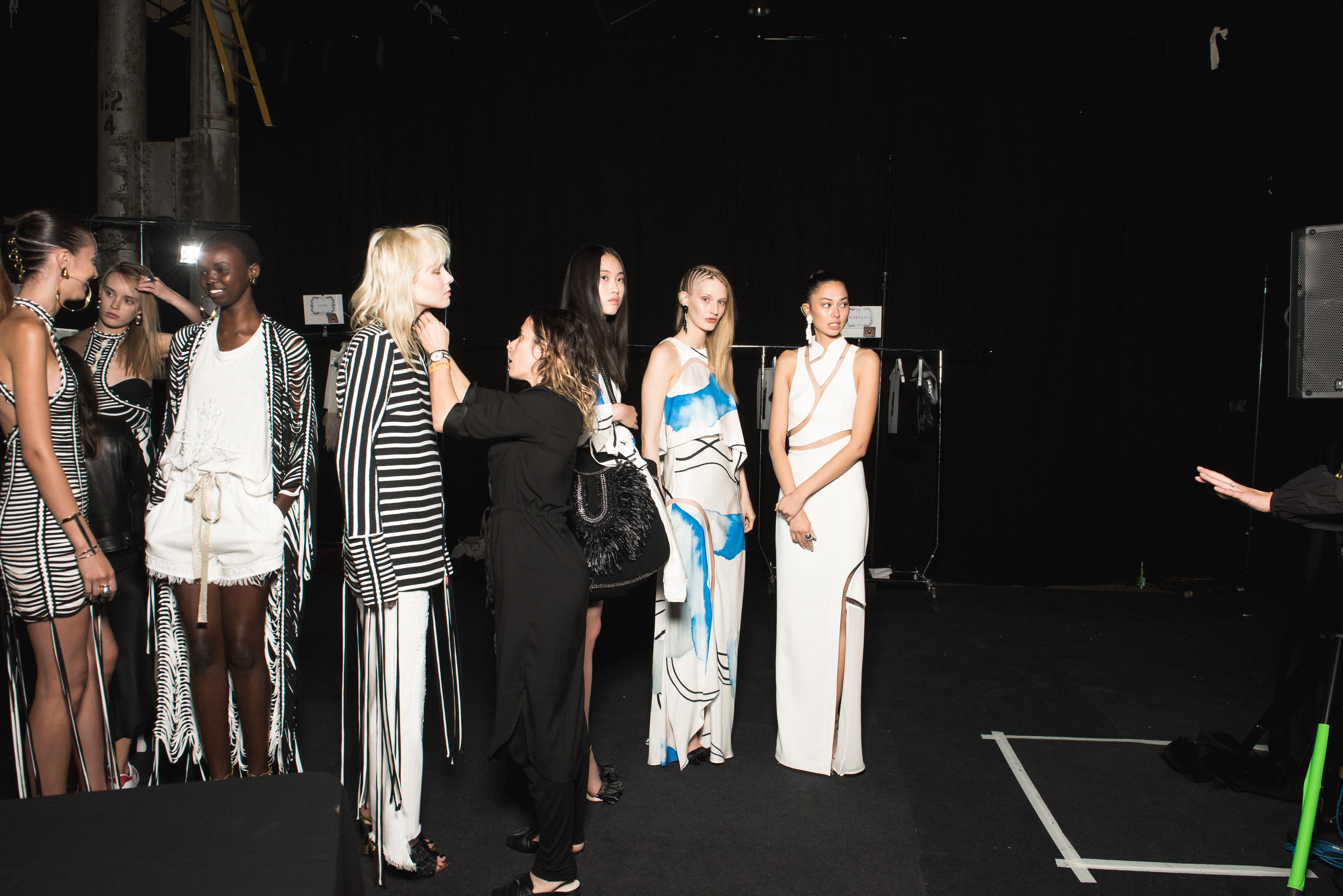
Another big question that has been asked in relation to fashion week by a Vogue columnist is – “what is the carbon footprint of a fashion show?” which, maybe unsurprisingly, when put into Google yields no relevant results.
Even the income from fashion week is difficult to estimate as the boundary of what should be included in the income calculation is unclear. The figures can be derived from a wide range of factors and activities including the numbers of attendees, the brand’s income and the money paid to services (e.g. accommodation, food, transport, and more).
Many brands are also claiming to have reduced the carbon emission at their fashion shows by using strategies such as waste reduction and responsible sourcing. Gabriela Hearst is amongst these designers aiming to produce a ‘carbon-neutral’ show. Besides trying to minimise the activities that could contribute to the high volume of carbon emission, the designer aims to offset carbon emissions by donating funds to the Hifadhi-Livelihoods Project in Kenya.
Having an awareness of the carbon emission generated by fashion weeks is a starting point to make the fashion industry more sustainable. However, the effects that it has beyond the shows itself might not be as recognised, as fashion weeks often perpetuate unsustainable production and consumption long after the event. While the event for high-end designers is many steps removed from the fast fashion pieces found on the high street, campaigners view it as a major influence on retailers who market cheap clothing that gets worn once or twice, if at all, before being thrown away.
When there are more than Four Seasons a Year
In the past, fashion weeks were the focal point for the fashion industry. Designers would work around these dates, planning designs and materials six months prior to the show. Seasonal pieces would be ready to purchase months in advance. ‘Seasons’ in the fashion industry no longer work like they used to thanks to the emerging fast fashion business model; designers now make their products available for a shorter period of time before their shows.
The nature of the fast fashion industry encourages the renewal and reinterpretation of styles so that the life of a fashion product is typically limited to a matter of weeks. This has resulted in around
£30 billion worth of unused clothing in the UK alone, and approximately £140 million worth of clothing going into landfills each year. It is estimated that by 2030 clothing consumption worldwide will increase by 63% to 102 million tons.
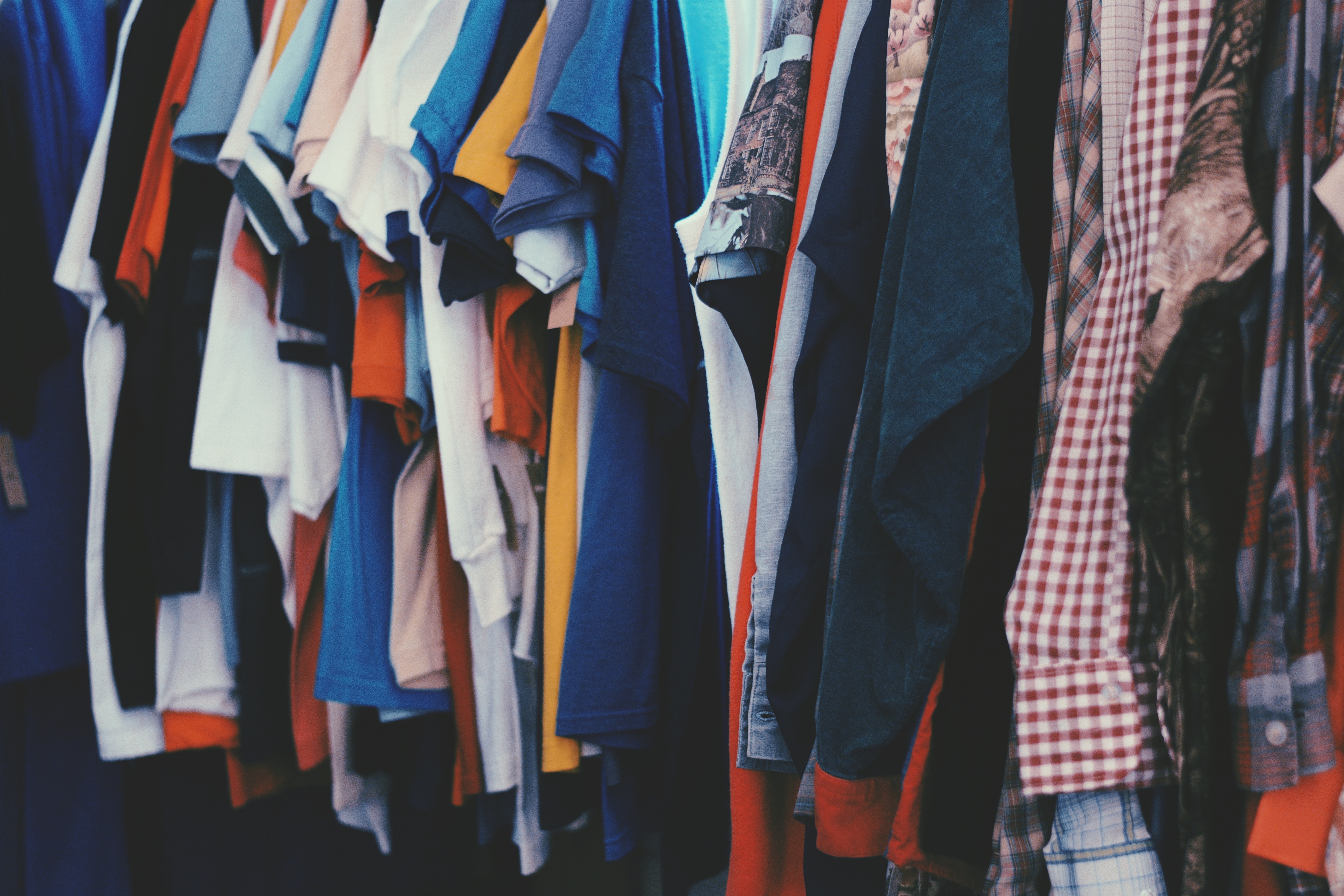
Needless to say, the current business model of fast fashion has been contributing to the over-consumption of clothing. Although this democratises fashion products by making them affordable and accessible to everyone, it has created the throw-away culture that has led to countless amounts of wasted materials and garments.
With the advancement of technology and social media, fast fashion retailers can easily contact manufacturers with plans to mimic garments from fashion events or even social media in a short space of time. This allows the fashion industry to operate on the fact that they are able to turn the designs immediately from runways to stores, expediting the seasonal launches of fashion garments and allowing brands to offer the ‘see now buy now’ option for customers. Fast fashion has encouraged consumers to urgently and continuously consume fashion products, developing the culture of disposability (i.e. clothes are not made to be mended or fixed).
Design Plagiarising Makes Fast Fashion Faster
Although design plagiarism might not be illegal, it is one of the contributing factors that make the fast fashion business model thrive. There are not only pieces from large brand names that have been mimicked, but also some from independent designers as well.
BBC stories highlighted cases of independent fashion designers being copied by fast fashion retailers. One of the designers highlighted that getting inspiration from other designers might be normal for the fashion industry, but taking designs from others should not be acceptable. Whether all designers should be allowed to copyright their designs has been debated however, we could all agree to stand up against practices which promote fast fashion production and consumption.
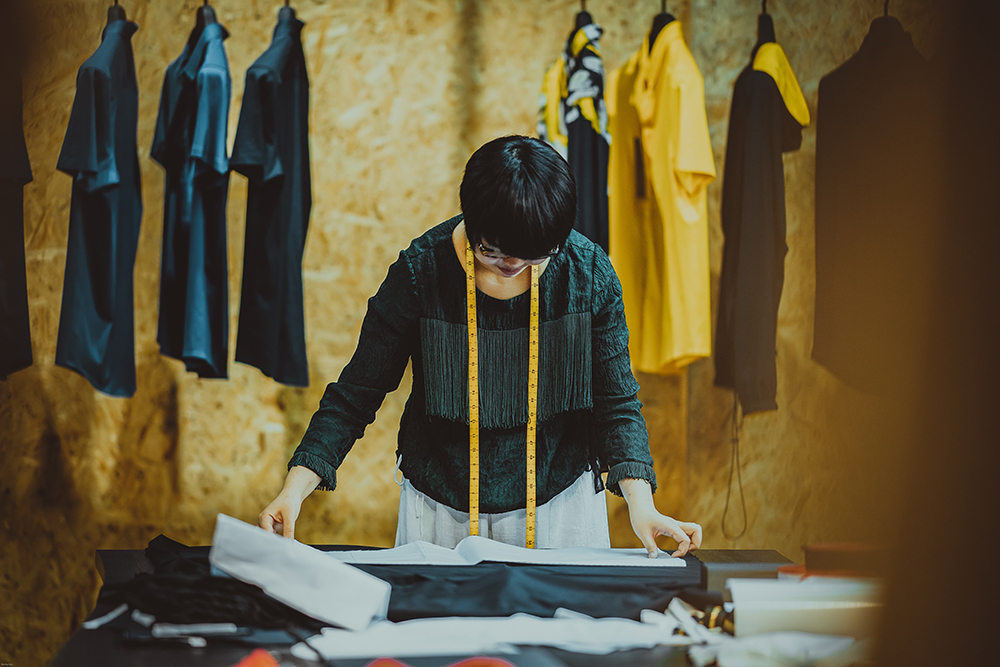
This story also called attention to another aspect of exploitation that the business model of fast fashion has on society. As well as the environmental impact and labour exploitation, design plagiarism could also harm the development of small businesses and entrepreneurs. If copied, garments are sold by fast fashion retailers at a significantly lower price which independent businesses are often unable to match, meaning that they may not be able to secure an income from their own innovative designs. This, to a certain extent, could contribute to the economic harm to those independent designers.
It can be difficult to use legal mechanism to alleviate or fight this problem, as design plagiarism isn’t necessarily illegal. However, people are protesting this issue through social media accounts and media channels.
The most prevalent channel that is known for such protest is an Instagram account called Diet Prada, which has a following of 1.4 million people. Diet Prada highlights potential plagiarism through showcasing images of similar designs next to each other. The response from the public has been quite mixed. Some supported the idea that design plagiarism is not acceptable as the original designers should be respected. However, others argued that design plagiarism helps make fashion products more accessible.
A similar issue has been raised relating to the cultural appropriation of designs in the fashion industry. This involves designs or art from different cultures being used in fashion products; in many cases, producers and retailers blatantly copy patterns or shapes from traditional cultural clothing.
This led to the rise of another social media protest against design plagiarism called the GiveCredit campaign. The use of hashtag #GiveCredit promotes the disclosure of where or which cultural communities the designers took the inspiration from.
These social media protests have helped to promote the awareness of exploitation and makes design plagiarism less acceptable. However, codification is required to regulate where those designs come from. Moreover, more educational and social campaigns promoting the awareness of the issue and providing support for independent designers could help to reduce such exploitation.
Consumer Responsibility for (Un) Sustainable Fashion
There have been several calls to challenge the business model of fast fashion and to urge relevant businesses to take action and reduce their social and environmental impact.
Jerry Greenfield, of Ben and Jerry’s ice cream, said that “Nobody wants to buy something that was made by exploiting somebody else.” While we might readily agree, consumer behaviour too often falls short of that standard. Our consumption behaviours are generally unsustainable and our signals to producers about the importance of sustainability are weak at best. In competitive markets, consumer sovereignty requires producers to be attentive to consumer preferences. If consumers expressed a preference for more sustainable clothing, clothing brands would have no choice but to respond to that preference if they are to stay in business.
There are many examples of consumers engaging on social and environmental issues and making a difference. Classic examples include Ghandi leading a boycott on British cloth as part of his campaign for Indian independence, the California grape boycott in the 1960s and 1970s which enabled the organisation of farm workers, and the boycott of firms associated with South Africa during apartheid. More recent examples include the #DeleteUber campaign, which resulted in hundreds of thousands of consumers deleting the Uber app following Uber’s expression of support for President Trump’s immigration policies, and the boycott of Amazon over working conditions in its warehouses.
While refusal to purchase in consumer boycotts can send a strong signal to producers, often it doesn’t come to this. A threat of a boycott can be enough to change firm behaviour: Lego terminated its partnership with Shell following pressure from Greenpeace, which protested the oil company’s plans to drill in the Arctic. Greenpeace’s YouTube video featuring Lego pieces depicting the Arctic and covered in oil had over six million views.
Equally, many marketers do see the potential appeal of sustainability to consumers in some product categories. This is, in part, the premise underpinning Unilever’s Sustainable Living Plan. Accordingly, consumers have another way of being more environmentally responsible. The recently coined term buycotting describes the actions consumers take to support businesses that exhibit environmentally responsible practices. Consumers can effectively ‘vote’ with their wallet which way they want companies to behave. Research suggests that women, people who are more altruistic, and people more involved in volunteering are more likely to buycott than boycott.
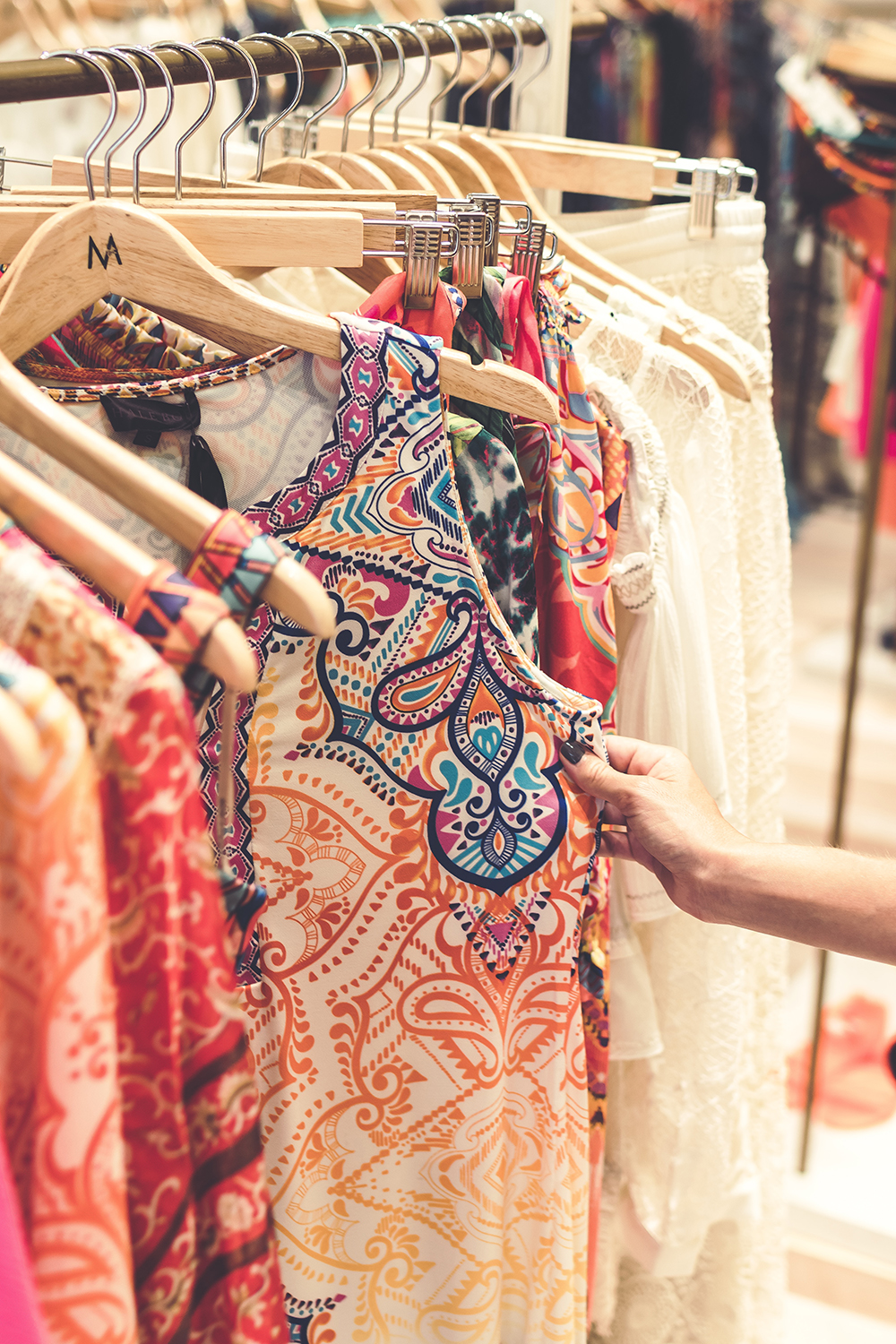
When it comes to fashion, however, consumers seem to care less about sustainability. Perhaps this is why companies like Patagonia, the outdoor clothing company, feel they have to educate consumers by famously asking them to not buy their products, or to prefer used rather than new clothing.
Research on boycotting offers some insight on when consumers will engage in sustainable consumption. In the first instance, there must be “perceived egregiousness”. The company behaviour must be perceived as seriously wrong. In the context of fast fashion, this means that consumers need to see throwaway clothing as wrong; which may mean they need a fuller appreciation of its environmental consequences.
However, a rational understanding of the ecological effects of fast fashion, even if coupled with a strong emotional response to the issue, will typically not be enough to generate a refusal to purchase. The research suggests that consumers also weigh up the benefits and costs before acting. So key benefits are believing they can make a difference on the issue and the possibility of self-enhancement through their refusal to purchase.
As the research confirms, there is the cost demanded in the form of a sacrifice: denying oneself a product one would dearly love to have. Maybe that is the biggest challenge for sustainable fashion? Consumers are simply reluctant to give up on having many different outfits at a relatively low cost. However, the price paid at the till does not reflect the true cost of that fast fashion item: the cost to the planet.
By Dr Solon Magrizos and Professor Craig Smith
Bringing Accountability to Personal Consumption
In a BBC documentary, the presenter Stacey Dooley showed individual shoppers the physical amount of water used to produce the fashion product they were purchasing. For example, a 100% cotton jacket uses 10,330 litres of water just to grow the cotton to make to the jacket. This was said to be equivalent to one person’s consumption of water over 24 years. This information shocked shoppers and encouraged them to want to shop more consciously.
The documentary concluded that it is not always that people do not care about what they are buying, but they are not informed enough. Often, consumers might not know enough about the impact of their actions to make responsible decisions, in this case, in their shopping activities.
It is time for fashion brands to become more transparent by disclosing information that aligns individual responsibility with corporate responsibility. This concept is not new, we are familiar with Starbucks and other food producers who disclose information about calories and free-trade certification. They do not only disclose the ingredients of the food, but also disclose the calories and, in some cases, where the ingredients are sourced from. This encourages individual consumers make their consumption decision based on this information; and also makes them feel the impact of such decisions.
Fashion brands on the other hand, do not really disclose this kind of information, they merely disclose the fabric compositions. There is more work to done by the industry – not only are corporate disclosures via traditional annual reports needed; but also alternative forms of disclosures that can make real impact on consumers’ decision.
Do I need to give up enjoying fashion to save the planet?
The business model of fast fashion responds to the demand of customers very well, especially in the era of I WANT IT NOW, or I MUST HAVE THIS. However, the impact of the industry and how we consume fashion products, calls for an urgent change. Besides pressuring the industry through non-governmental organisations and different movements around the world, we as individuals can also help contribute to the change.

We can still enjoy fashion; however, we need to start enjoying it consciously and responsibly. Fashion Revolution offers a guide on the different actions we can take to act more responsibility, from sharing ideas on how to refresh your wardrobe without buying new things to supply chain transparency from your favourite brands.
Here are some tips for consumers interested in minimising their environmental footprint. If you have any more tips, feel free to share with us.
Buying decisions
- Before buying any fashion item, consider whether you would have an occasion to wear it more than 20 times. If the answer is yes, consider buying it
- Buycott by supporting environmentally friendly brands such as Patagonia
- If you need special occasion clothing, consider renting clothes. Sharing economy could help solve the problem here
- Focus more on quality, not only price
- Try second-hand clothes shopping or swap with neighbours and friends
Disposing decisions
- Amend more, dispose less.
- If you need to dispose of your clothes and they are still in good condition, consider donating them to charity or second hand shops. Companies like H&M will even give you store credit for recycling old clothes
- Can they be recycled for household uses? For example, you can turn them into rags for household usage
- Dispose of them in an appropriate manner (e.g. putting them in garment collection or recycling points in different retail stores, or look for textile recycling programmes).It is much better than dumping them in your household bins!
Fashion appreciation and norms
- Create a culture where it is okay to wear the same outfit to different occasions. Do not shame people who wear repetitive outfits to different events
- Focus on styling your current clothes to make different variations. To be fashionable, you do not need to buy clothes every week or every day!
- Being creative and stylish by turn unwanted or too-worn clothing items to new treasures such as head bands, bracelets, or home decoration pieces
- If resources (especially time!) allow, consider setting up a clothes swapping group, or setting up a community where you can share responsible fashion appreciation and consumption
There are different steps to make fashion more sustainable. However, firstly we should start with being AWARE that the problems from the fashion industry are real and impactful. Then we can take appropriate ACTIONS that can help make things better. Small actions and changes could help and eventually lead to the ACTUALISATION of our responsible and sustainable consumption.
- Find out more about Dr Charika Channuntapipat at the University of Birmingham
- More on Charika’s work with Responsible Business on fast fashion
- Find out more about Dr Solon Magrizos at the University of Birmingham
- Find out more about Professor Craig Smith at the University of Birmingham
- Back to Business School Blog

Mark is right, they are sustainable fashion designers. Here’s the source:
https://wtvox.com/sustainable-fashion-designers/